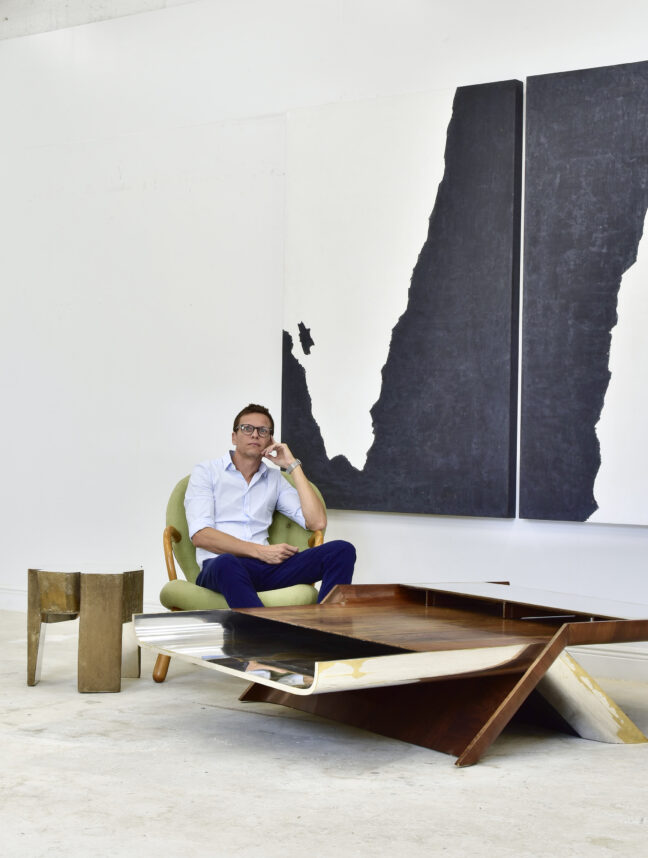A fine artist in right own right, the Miami-based artisan is the go-to conservator for gallerists, collectors and major fairs like Design Miami
Visiting major fairs like Design Miami, PAD, and even TEFAF, collectors and enthusiasts alike are privy to a wide range of contemporary, vintage and antique furnishings presented in pristine fashion. What they might not know is that many of these works, often rare finds exhumed from dusty or poorly insulated warehouses, require a significant amount of repair and restoration before being put on show.
It’s a delicate process that sought-after restorer Austin Kerr has honed over the past 25 years. In his work, the Miami-based talent focuses as much on harnessing the technical skills he mastered as a kid as his understanding the nuances of historical preservation. Conducting in-depth research is done on a case-by-case basis, regardless of whether it informs the meticulous refinishing of a Lina Bo Bardi design (recently on view as part of the Carpenters Workshop Gallery New York’s The Turning Tides: Design Modern Brazil exhibition) or applying a new colour to a Greta Grossman desk lamp.
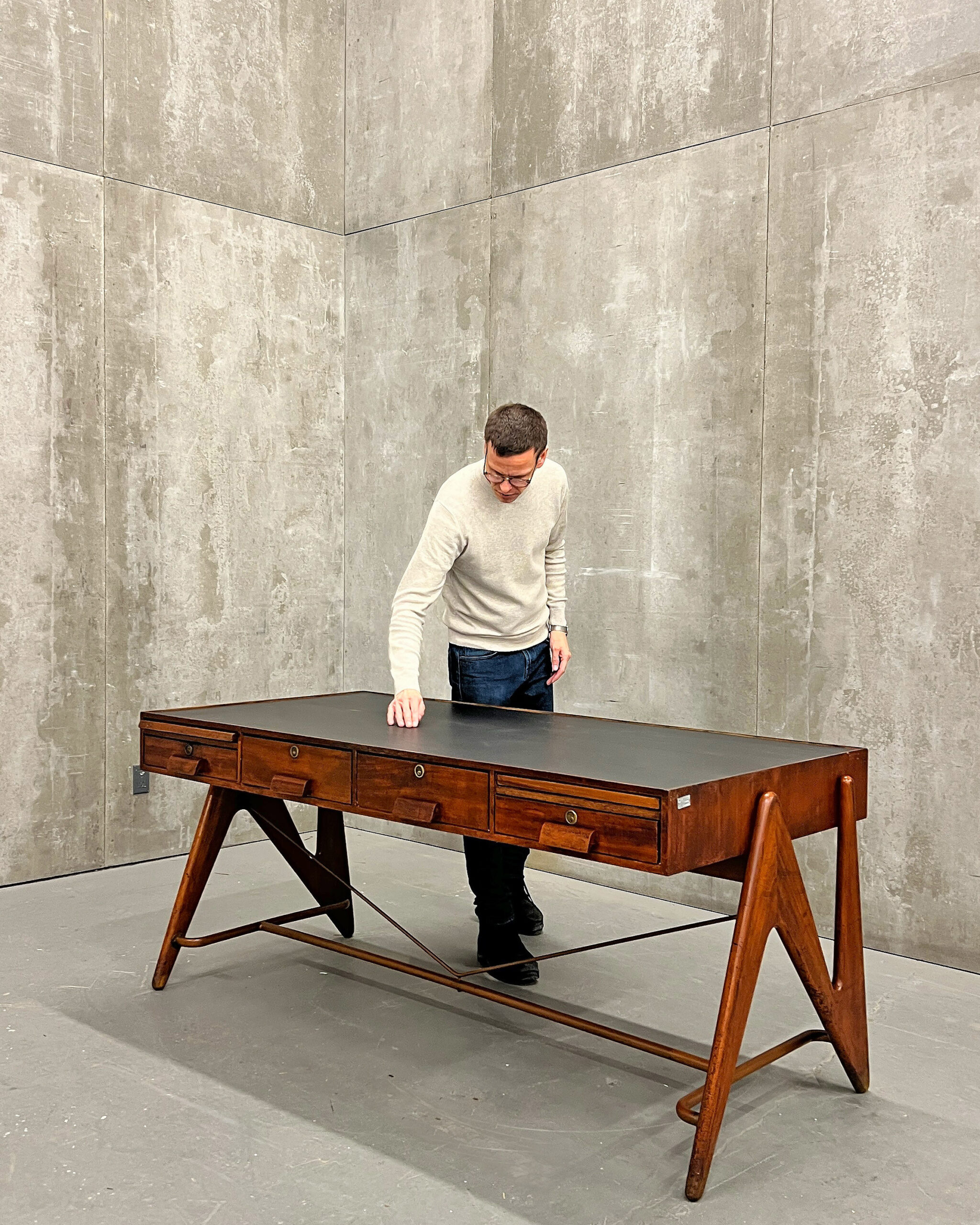
Kerr’s own artistic practice is an outlet that allows him to utilise the savoir-faire of his conservation work in a new way, but also freely explore new techniques and processes that then translate back into furniture restoration. Works like those in his Experiment of Truth series feature in prominent collections, but perhaps more importantly reflect his own spiritual awakening. For Kerr, creating these pieces is a form of healing; cultivating meditative space. This fundamental ethos shapes his willingness to do away with the image of an isolated genius—holding fast to a specialised expertise—and instead, imparting his know-how to the wider world.
Kerr works with major galleries like Carpenters Workshop Gallery and R & Company, as well as advisors and collectors. He was recently named the official restorer and conservator for Design Miami, which with the launch of its Los Angeles edition in May, will mount an impressive four fairs across the globe this year. Kerr spoke to Effect about his background, his role in collectible design, and some of his key projects, as well as his plans for the future.
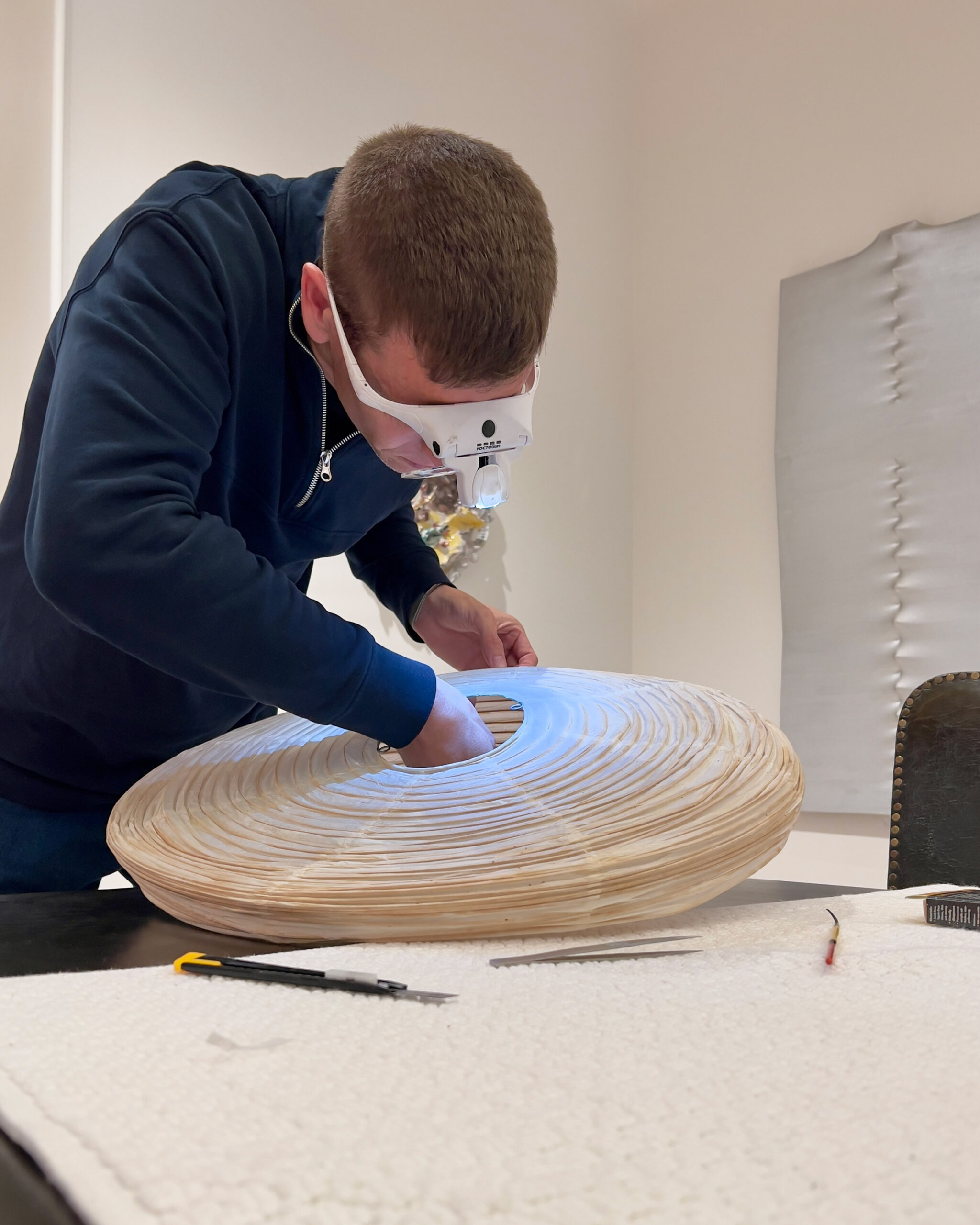
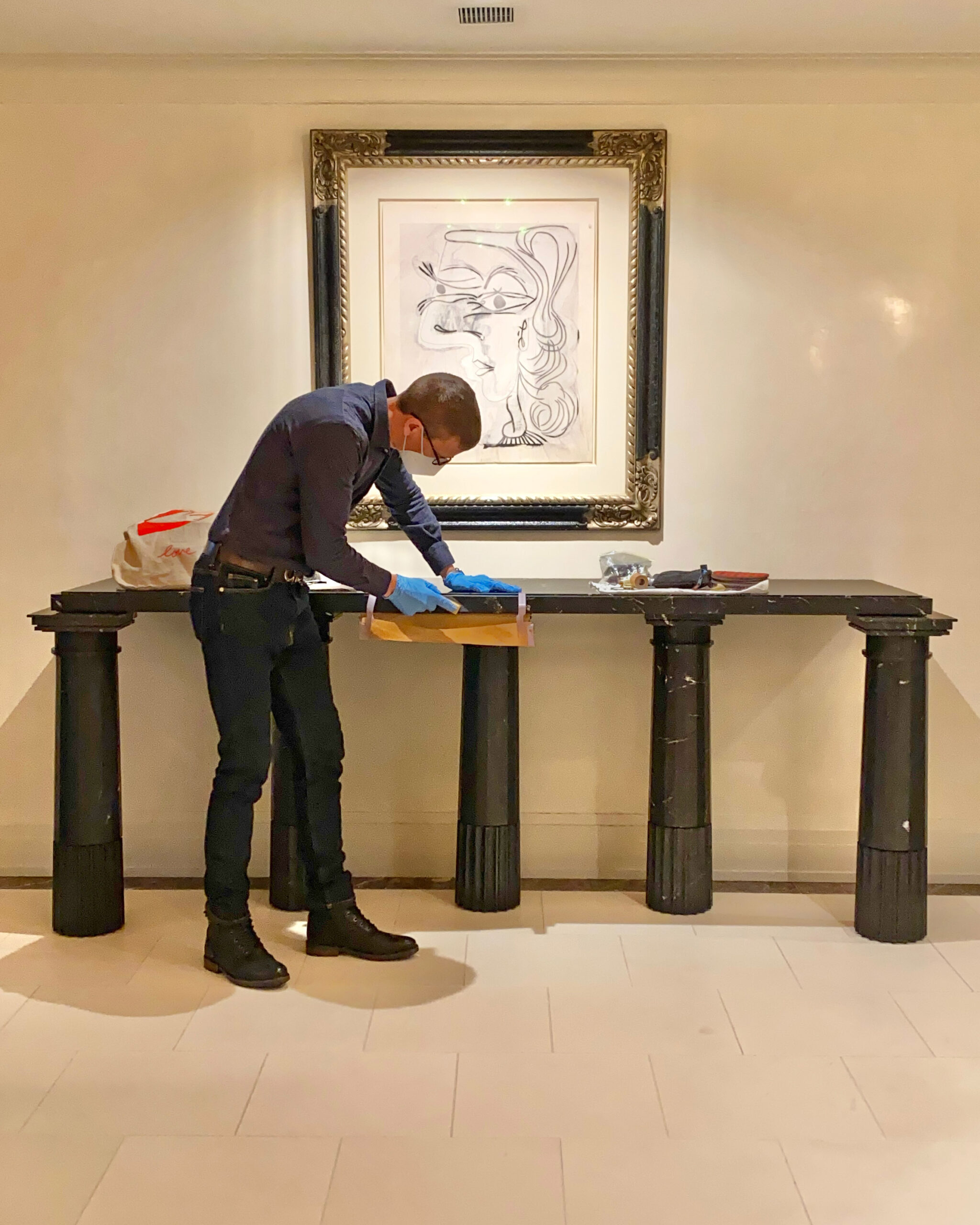
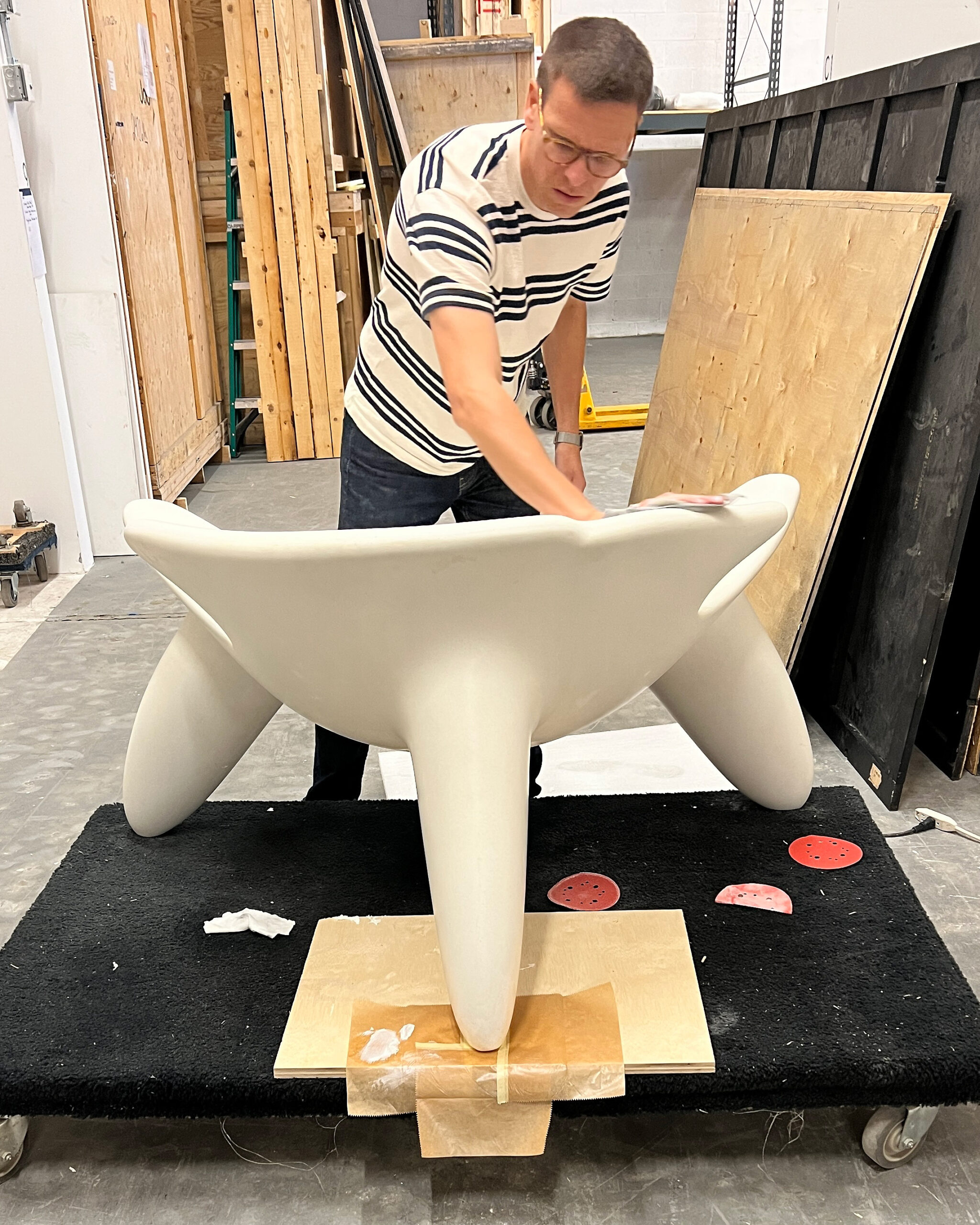
Talk about your background. How did you first get into furniture design?
I grew up in a house of furniture makers, and they pretty much lived and breathed design. We did a type of antique reproduction, which was country but also French in style. I did my first antique finish when I was about six years old. The family business was based in the Dallas-Fort Worth area of Texas. My dad designed the furniture and my mom managed the showroom.
We also had a facility in Mexico. It allowed me to gain an appreciation for different cultures and cuisines. As I got older, my dad appointed me the manager of the fabricators and told me that to earn their respect, I needed to master the skills as well. I decided to specialise in metal finish. As the brand’s eventual creative director, I also began developing custom treatments and oversaw quality control.
What brought you to Miami? How did you first get involved in collectible design?
I moved to Miami in 2009 and because I speak Spanish, it felt like the right place to branch out and begin to do my own thing. I started out by developing custom finishes for different clients and focusing on millwork. I spent a year and a half heading up a team of six employees working on a single house. It became exhausting and very repetitive, so I wanted to try and start doing work that was more rewarding. With collectible design, you can’t just go and buy any Wendell Castle piece on the side of the street. Working in this market requires more precision and attention. My practice became much more intentional.
Growing up, I had a poster on the wall that read ‘most people don’t set too high of a goal on this. They set too low of a goal hit’ and that always stuck with me. Moving into collectible design, I immediately reached out to the highest level of designers and galleries. I reached out to R & Company and Gallery Fumi, amongst others—the best of the best—and I was fortunate enough to collaborate with them and for them to trust me with their pieces. I approached the Carpenters Workshop Gallery at Design Miami and they flew me to New York two weeks later to fix a Karl Lagerfeld marble console. It’s a massive responsibility but I just ran with it.
With collectible design, you can’t just go and buy any Wendell Castle piece on the side of the street. Working in this market requires more precision and attention.
Austin Kerr
What techniques and specialisations do you utilise the most these days? How do you work with your clients?
What I’m most versed in is wood finishes. However, I’ve also done metal, stone, ceramic and even paper restoration as well. I’ve worked on Noguchi Akari lamps but also mixed media pieces like those by Vincenzo de Cotiis.
Typically I worked directly with galleries, clients and in some cases, receiving warehouses. It’s rare that I contact a living talent as I usually understand the full scope of the task at hand and the materials involved quite well. It’s quite intuitive. I worked on a Rick Owens onyx table and wanted to fully understand the material before I even got the piece in my hands. I started by researching onyx and how it’s formed. I delved into the natural evolution from conception of the material to the artist’s intention, understanding Owens’ especially natural and organic approach, how he doesn’t like things that are very engineered and prefers simplicity. All of this information influenced how I approached the piece. I was basically an extension of his hands.
How in your practice do you deal with the complexity of historical conservation; the desire to restore a piece so that it resembles exactly what it looked like when first produced versus introducing new strategies to re-communicate the original concept?
It’s an important part of the conversation I have with clients, because there’s typically five different ways to restore almost any kind of damage. I always go for the least invasive. But if I have a really strong suspicion it’s just not going to hold up, then I’ll press upon them to consider other options. I always try to communicate clearly and honestly that if slightly more extreme measures are needed, what the effect will be. I want them to fully understand the process and make an educated decision because these are valuable items. I want to preserve that but also have the intention of trying to keep them alive.
I learned antique reproduction finishing while growing up, and so I have a great appreciation for patinas and maintaining the evidence of use and history. I love storytelling elements. When I’m sitting and looking at a writing desk that’s a vintage piece, there’s a dialogue going on because I can see if the person was right-handed or left-handed, I can see that on the right hand side of where the chair goes, there’s damage. You can tell if they wore a watch and their watch would scratch the finish, or if they had one drawer that was their go-to.
Because of this, I also prefer working on furniture by autonomous, craft-led designers—especially from the Studio Movement—rather than industrial-produced items that tend to have less character. There’s something to be said about preserving this legacy but also highlighting the provenance of where an object has been and who’s owned it over time. Sharing knowledge between different experts creates a sense of community as well.
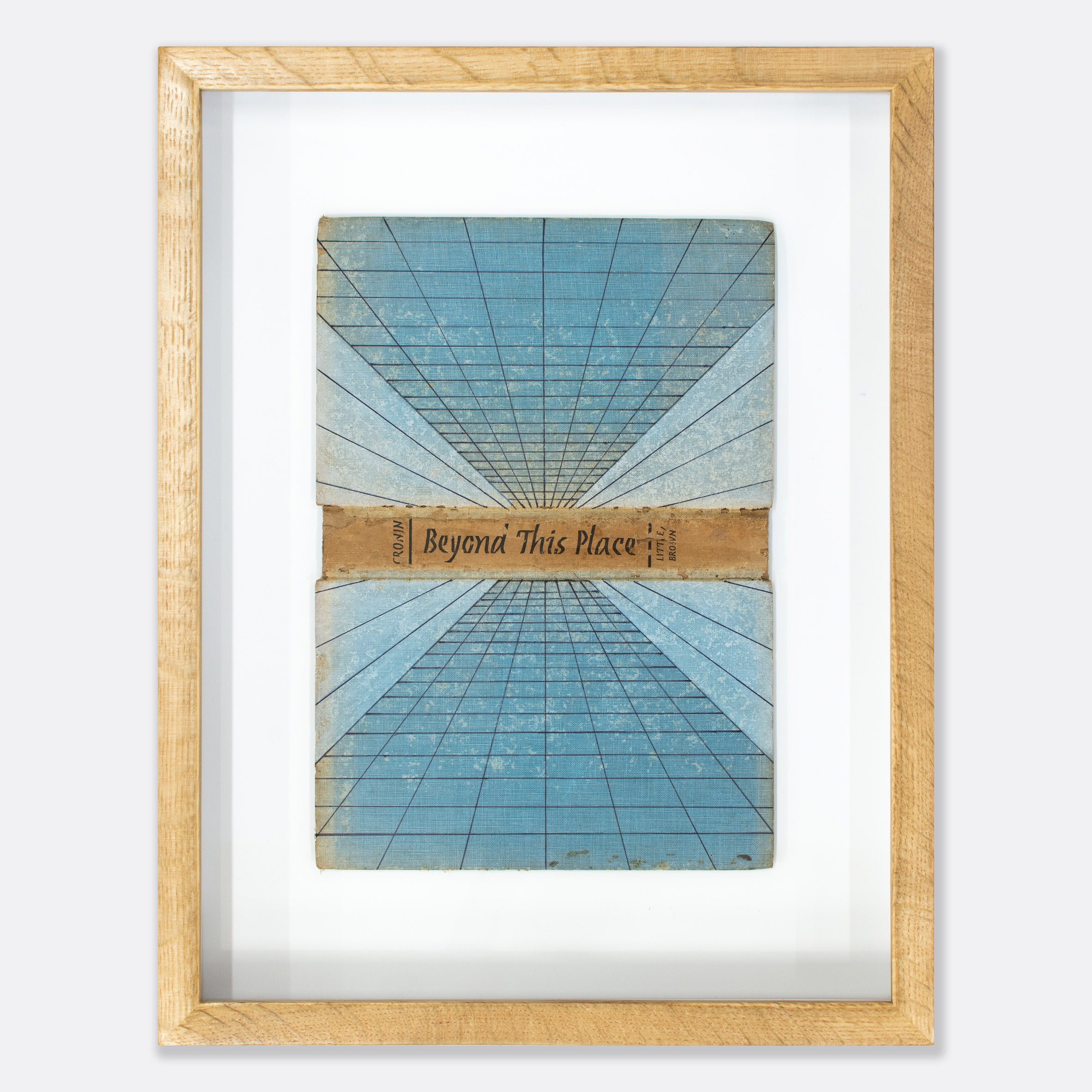

Talk about how you began to develop your artistic practice. What does making art afford you that restoration might not and how does one practice inform the other?
The art part of my career came a little later in life, when I was about 28. I found it to be a different way of creating and an outlet to processing life. It was a very meditative process that really allowed me to see similarities in how things interact and move; how life is all kind of the same. And because it’s kind of a slow process, it just really helps me to deal with these realisations. Creating this work is quite profound for me.
Doing furniture and some sculpture restoration expanded my purview into the art world and allowed me to think more flexibly about materials. I do large-scale Venetian plaster and acrylic-on-board pieces. I have small works on paper that reused antique books like the One Purpose and Beyond this Place pieces. And the more that I’ve gotten into the furniture and sculptural worlds, I’ve been able to witness where the lines blur.
There’s a lot of overlap between my restoration and art practice. It’s why I like taking on challenging projects that push me to experiment with new materials. I recently worked on the conservation of hand-painted tiles for a hotel in Palm Beach.
How does spirituality play a role in both facets of your work?
In 2015, I had a spiritual transformation. I always identified as a Christian but various life challenges kept me distracted from being fully intentional. This transformation was the catalyst for me aiming to do things with excellence and a dedication to this craft. I made a commitment to myself that no matter how difficult or embarrassing a situation is, I’m just going to be honest with the client and just keep their interest at the forefront of what I’m doing. I see myself as doing acts of service. I’m trying to help people and make their lives easier.

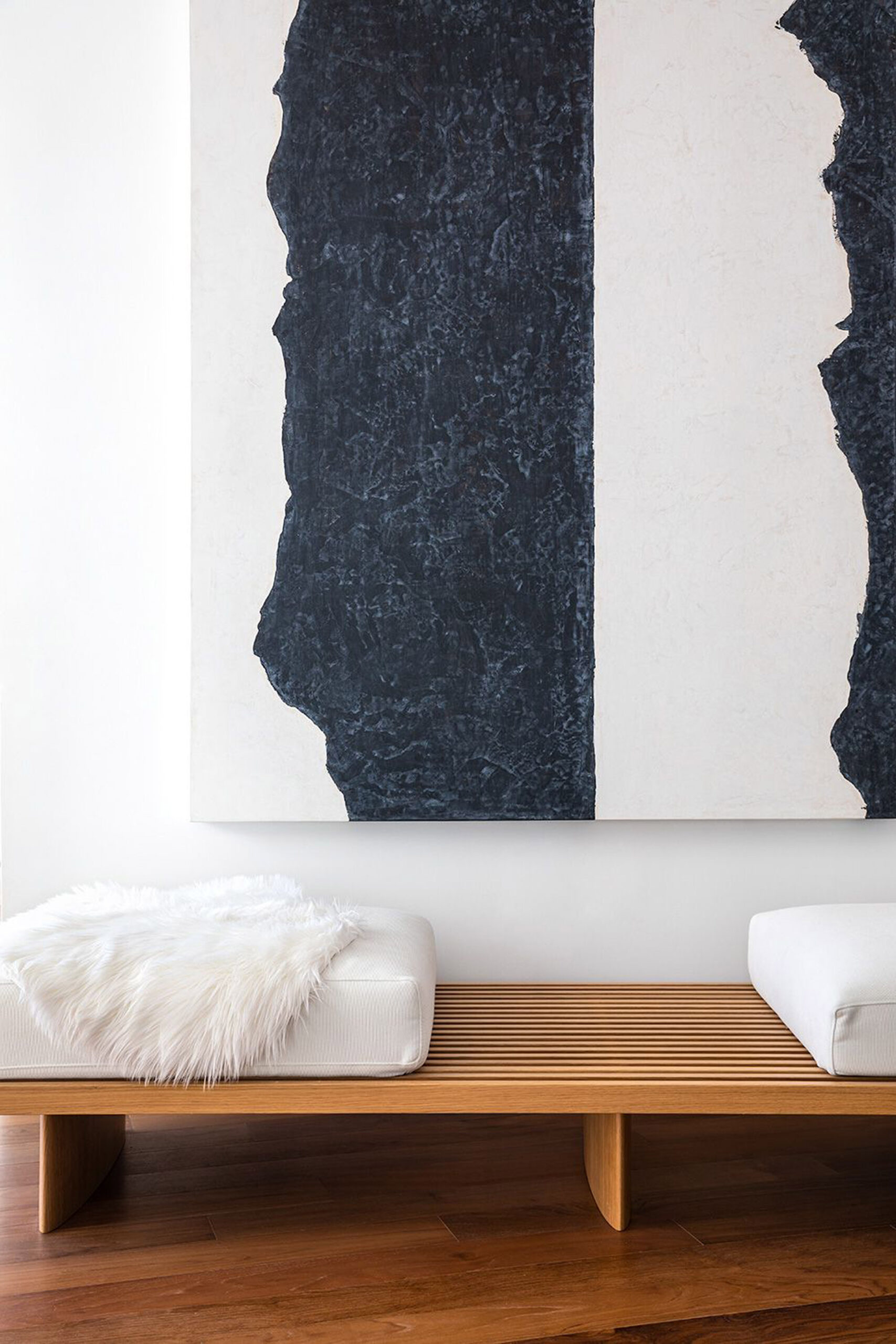
What are you working on next?
I was recently appointed as the official restorer and conservator for Design Miami. With works being shipped around the world, it’s inevitable that some things need fine-tuning, cleaning, or polishing.
I always advocate for transparency with my restorations, which is evident on my Instagram. I’m planning to launch an online masterclass so that other people can do their own restoration. I will focus on the different types of materials, sealers and other considerations. I’ll probably have a dedicated course that’s for gallerists and another for housekeeping crews on how to maintain and polish your brass furniture, for example. What not to use on pieces and what can be cleaned.
Read more: Antique Furniture | Antiques | Contemporary Furniture | Design | Design Miami | Furniture | Furniture Restoration | Vintage Furniture



